Issue:
March 2024
Oita Prefecture’s plan to boost population is succeeding where Japan’s government has failed
The Japanese government noticed its low birthrate and general population decline at least three decades ago and has become increasingly shrill about this demographic problem. Yet it doesn’t seem to be doing much about it.
Oita Prefecture, on the other hand, is taking a number of proactive, innovative steps to try to halt population decline in the prefecture, currently home to about 1.11 million people.
A 2020 study projected that the prefecture’s population could fall to as low as 458,000 by 2100 if nothing is done. Perhaps it was that projection that has spurred prefectural authorities to make plans to address the issue in the hope that by 2100 the population will stand at between 900,000 and 1 million.
The prefecture's Long-Term Comprehensive Plan is designed to promote regional revitalization by making the prefecture an attractive place to live and work. The idea is relatively simple: improve the quality of life in Oita to keep people from moving away, and take additional measures to attract people to move there.
While Oita’s population is still in decline, there are enough success stories to indicate that the plan is beginning to work and that the prefecture will achieve its target.
One of the goals is to promote immigration and voluntary return. For many decades there has been a population drift to Japan’s largest cities, which many see as offering the greatest economic opportunities. During the Covid-19 pandemic, and perhaps even before, many young people were becoming dissatisfied with both their big city job prospects and lifestyle, driving them to seek a different kind of life.
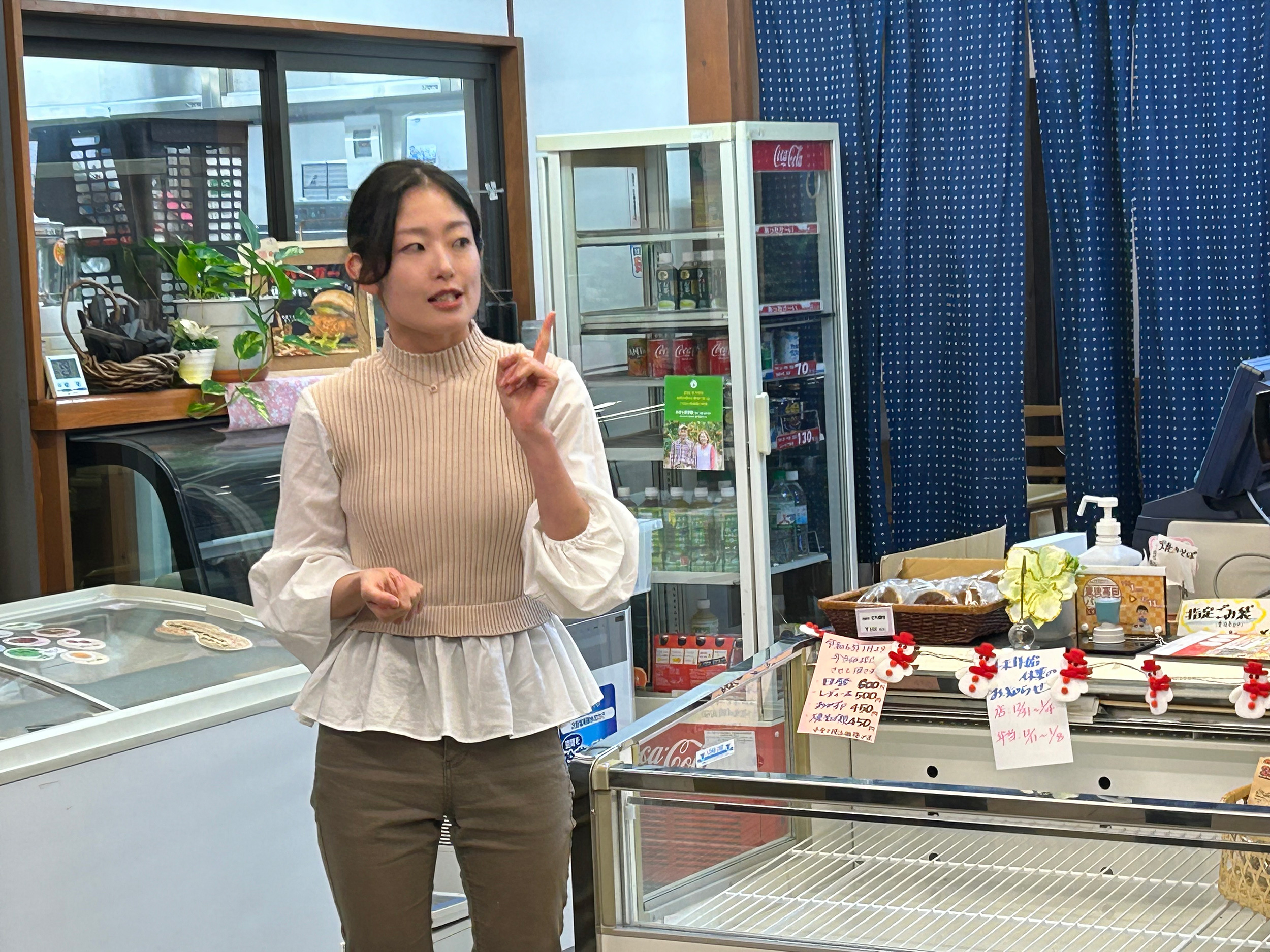
They include Riko Hashimoto, a Chiba Prefecture native who has relocated to the northern Oita city of Bungo-Takada. Hashimoto had worked briefly in the United States and had a good job in Tokyo. But she was dissatisfied with her prospects there, feeling that she wasn’t being given opportunities commensurate with her knowledge and experience. She found information about Oita’s relocation program and decided to apply. Once accepted, the prefecture helped her find a job and is providing her with subsidized rent for a brief period to help her settle in. Although she had to pay her own moving expenses, Hashimoto feels it was a small price to pay to achieve a much more satisfying lifestyle. She manages Yume Musubi, a Machi-no-Eki in Bungo-Takada featuring local products. The region has been recognized as a Globally Important World Agricultural Heritage area.
Under Hashimoto's supervision, Yume Musubi is also expanding its remit to include providing a community and afterschool space, a project that feeds into another prefectural goal: ensuring that parents have sufficient support in raising their children. One night a week, Yume Musubi operates a kodomo no shokudo – an inexpensive meal service for children who are sometimes joined by their parents.
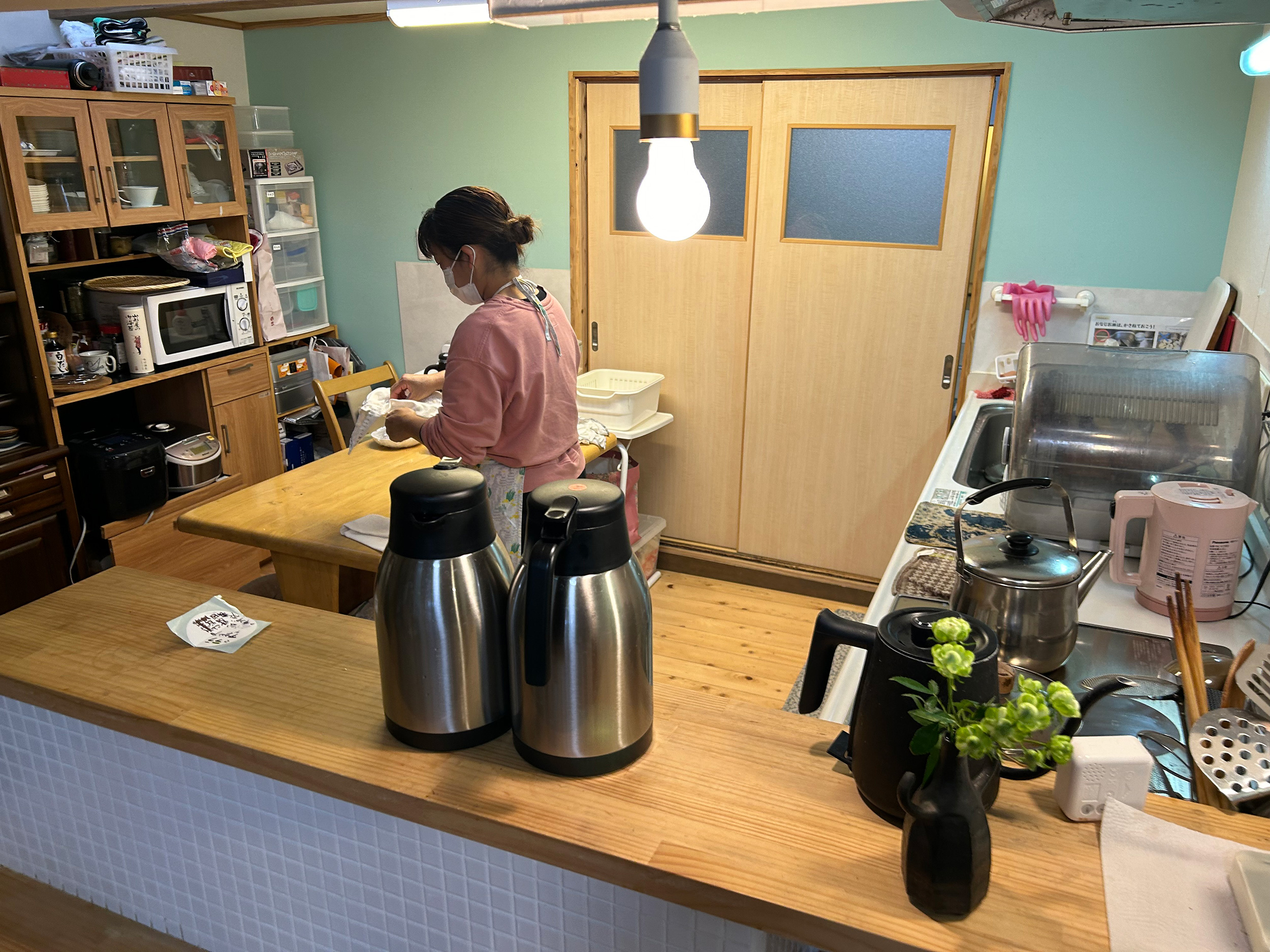
Minna no Ie Colorful is another afterschool center for children in Bungo-Taketa in the southwest of the prefecture. It opened about five years ago and is managed by Yuika Oku, a native of Oita city who relocated to this more rural part of the prefecture just for the opportunity to manage the community center, where she helps build a community in which no one is left alone. She was joined by Noriko Kodama, an early childhood education specialist who relocated from the Kansai region and is loving her new life in Oita.
In addition to afterschool activities, the center is open a few days of the week as a drop-in center for the elderly, providing an inexpensive but nutritious midday meal. Promoting healthy longevity is another goal of the long-term comprehensive plan. Several regulars come for lunch and stay for a few hours to chat. Older residents sometimes stay long enough to play with the children after school, providing cross-generational interaction that benefits both ends of the demographic spectrum (another goal of the long-term comprehensive plan). The center offers various activities, including crafts that appeal to both old and young, and even haircuts for busy mothers on certain days of the month, making the center a cushion between society and social welfare.
One of Minna no Ie Colorful’s regulars explained how he had left Oita as a young man to attend university and then worked for a company for a few years. When his parents became infirm, he returned to the prefecture to care for them and finished his working life as a manual laborer. While his children have grown and moved to bigger cities, his grandchildren spend several weeks with him every summer and he hopes they will one day decide to make Bungo-Taketa their home.
It has long been the case that young people from all parts of Kyushu leave the island to attend university. They often end up taking jobs in the city where they graduate university. Many, however, are happy to return to their Kyushu roots when the opportunity arises.
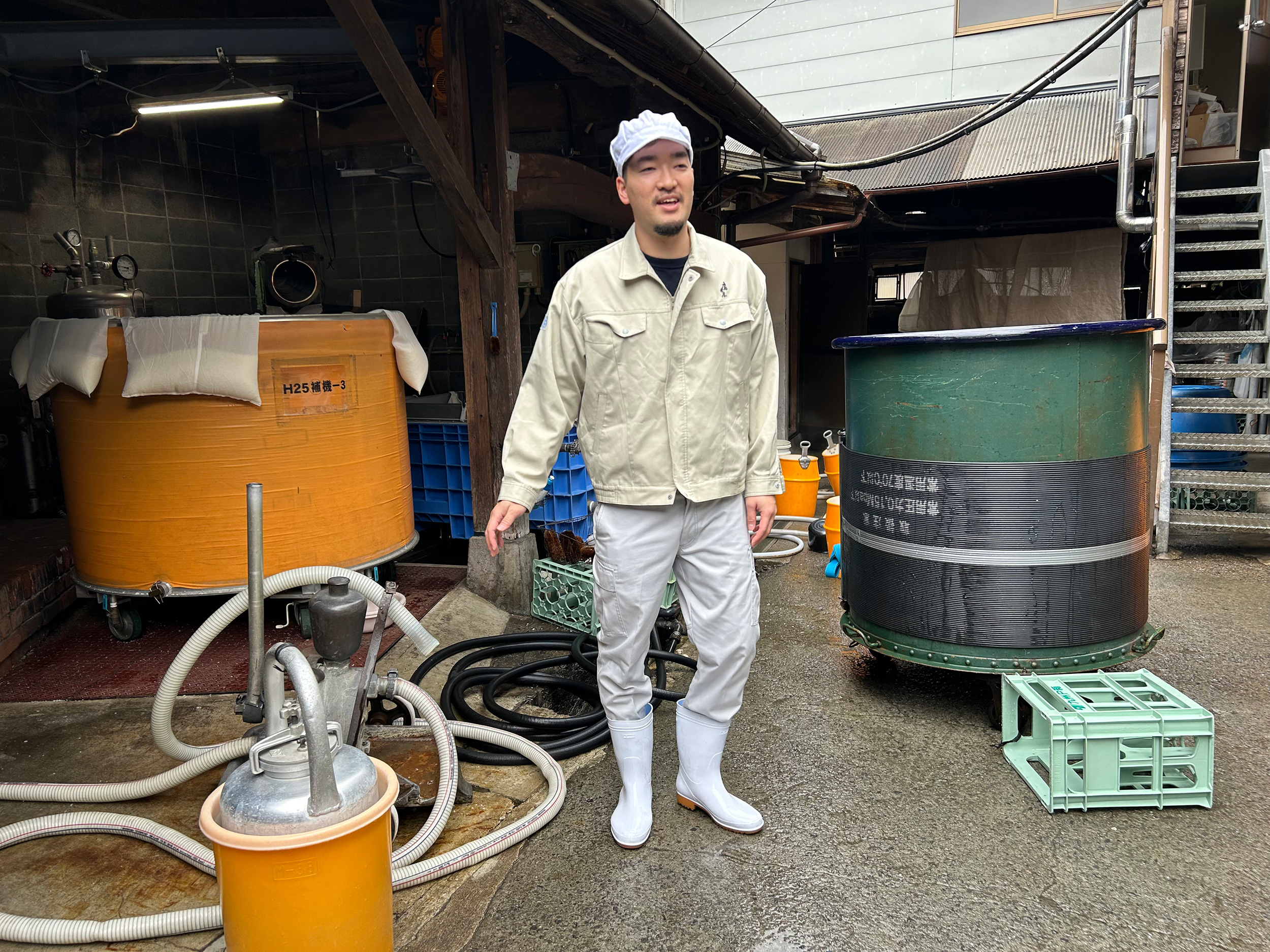
A variation of this pattern is the case of Yasuhiro Hamashima, the sixth-generation proprietor of Hamashima Shuzo, a saké brewery in Bungo-Ono. Hamashima left Oita to attend university and lived in the U.S. for a while. Hamashima said that when he was younger, he never intended to return to the family business, but after being away for a few years realized that he could make a better life for himself in Oita. He is continuing the brewery’s traditions while also introducing some modern features and new products.
In keeping with some of the modernization, Hamashima’s mother has opened a restaurant and cooking school, Takakiya Garden SASARA, across the street. She uses as many local ingredients as possible, including fermented items produced with byproducts of the saké brewing process. Oita's government is keen to support small businesses like the brewery and the restaurant to foster an improved living environment.
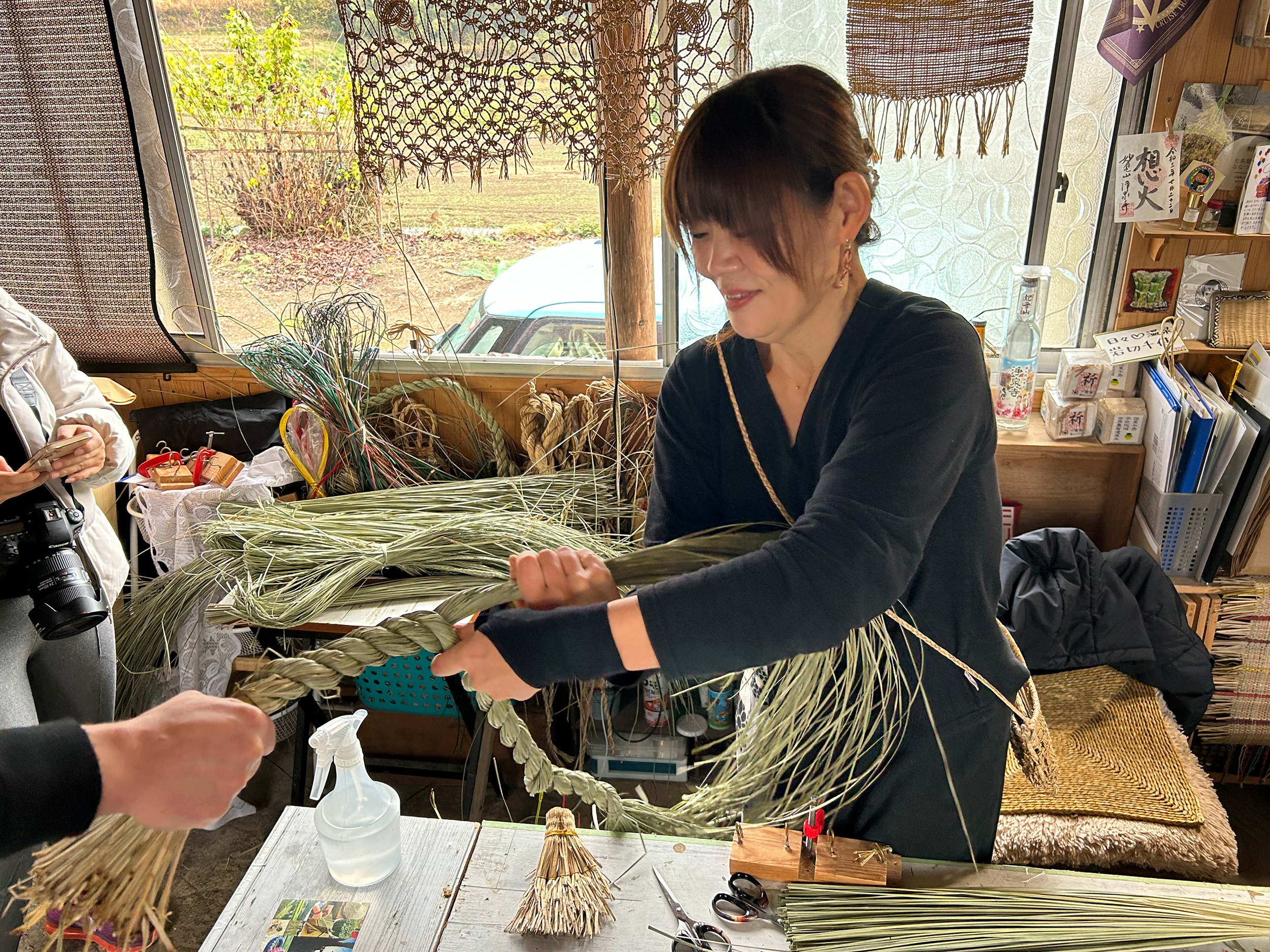
Chika Iwakiri, a Miyazaki native who relocated to Oita about five years ago, embodies some of the prefectural plan’s goals, including promoting migration into the prefecture and support for small business, as well as environmental preservation, fostering a rewarding agricultural industry, and nurturing a society where “women can shine”. Iwakiri operates a workshop on the Kunisaki peninsula, where she makes tatami and other craft items using shichitoui, an especially durable grass from Okinawa which, outside of Okinawa, is grown only in Kunisaki. She began making items with shichitoui to rehabilitate her right hand, which had been seriously injured in a workplace accident, and discovered that she enjoyed it. Prefectural support to set up her workshop in Oita, as well as the various support programs she receives as a mother of a school-age child, helped drive her decision to make Oita her home. She regularly gets commissions from large hotels and local shops to make souvenir items from shichitoui, which fulfills another plan goal: using regional resources for artistic opportunities as part of the Oita brand.
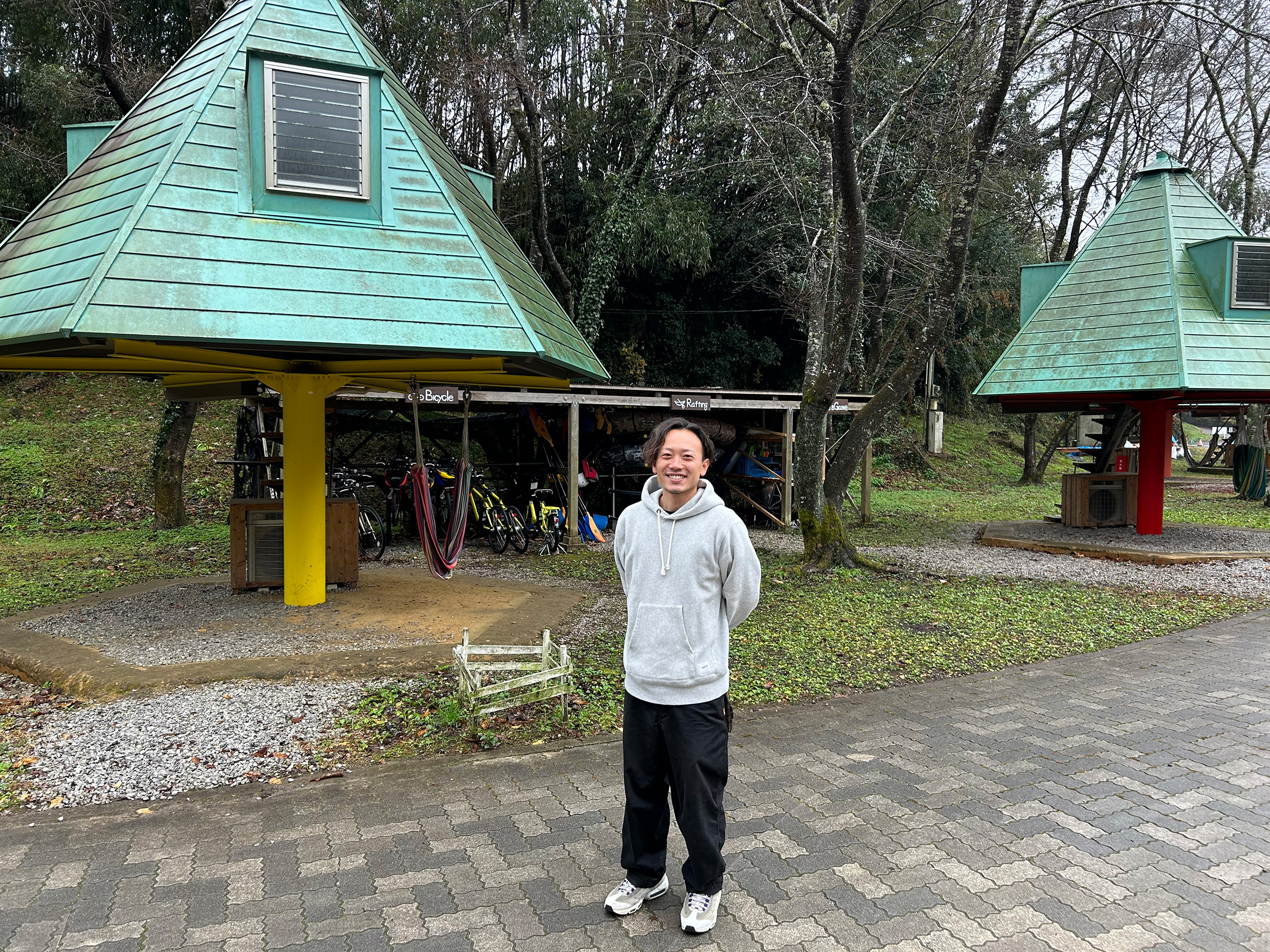
Another migrant into the prefecture is Takashi Ezoe, a Shiga Prefecture native. He moved to Bungo-Ono in south-central Oita to revitalize a flagging public campsite, in keeping with the plan’s goal to promote tourism. Ezoe and his business associate, Canadian Alex Makoto Fukada, upgraded the campsite’s facilities and decided to leverage their location on the banks of the Okudake River by setting up sauna facilities where visitors can use the river as their post-sauna plunge pool. Ezoe’s plans initially encountered some resistance from local community leaders, but they were eventually convinced of the project’s viability and even became shareholders in the company he has established to run the operation.
Ezoe says that a long-term lease on the site from the prefecture with zero rent to pay, along with low-cost financing for the capital required and family support programs to help him resettle with his young family all contributed to getting his start-up off the ground. Satonotabi Resort Lodge Kiyokawa is proving immensely popular with both Japanese and overseas tourists, with occupancy so far exceeding expectations.
Oita’s long-term comprehensive plan is to halt population decline by ensuring sound economic opportunities and improving the quality of life for its residents. While still in its early days, it is already showing signs of success.
Vicki L. Beyer is a freelance writer and a professor in the Hitotsubashi University Graduate School of Law Business Law Department. She served as kanji on the 2021 FCCJ Board.

